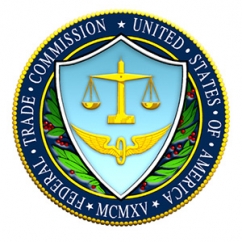Articles and News
A Plain-Language Guide To Changes and Important Updates In FTC Revised Jewelry Guides | August 01, 2018 (1 comment)

New York, NY—On Tuesday, July 24, 2018, the Federal Trade Commission released its final revision to its Guides for the Jewelry, Precious Metals, and Pewter Industries (16 CFR Part 23). These revisions take effect immediately and are final; the revision project is now closed.
The Guides focus on advising marketers how to make claims about jewelry products that are not deceptive to consumers. An act or practice is deceptive if it involves a material statement or omission that would mislead a consumer acting reasonably under the circumstances.
In this document, the Jewelers Vigilance Committee will provide a summary of changes to the Guides and recommendations on how to quickly and compliantly implement these changes in your businesses. As a reminder, these Guides apply to conduct at all levels of the jewelry trade. It is the responsibility of every member of the industry to understand these changes and to implement them accordingly. And, of course, JVC is here to help you do exactly that!
I. Changes to Guidelines for Precious Metals
A. Products with Precious Metal Surface Layers
1. Products Plated with Silver or Platinum. The previous Guides did not address unqualified claims of silver or platinum plated products. The revised Guides require marketers of plated silver and platinum products to state that the product does, in fact, only have a surface layer of precious metal. For example, “sterling silver plated” or “850Pt. Plated” would be appropriate disclosures.
2. Describing Precious Metal Plated Products. The revised Guides make changes to the manner by which marketers describe products with precious metal surface layers. First, for any product with a surface layer of precious metal that is marketed explicitly with the name of the precious metal, the Guides advise sellers to assure reasonable durability for the product and its precious metal surface layer. Second, for any product with a surface layer of precious metal, the revised Guides advise marketers to disclose the purity of the coatings if they are under 24K gold, 925PPT silver, or 950PPT platinum.
Additionally, the Guides provide examples of reasonable durability as follows:
a. Elecrolytic Gold Plating. The revised Guides retain the same standards for thickness and karat fineness amounts as the previous Guides (0.175 microns/7 millionths of an inch and 10K minimum fineness) to describe “gold plate(d)” and “gold electroplate(d)” products. However, the revised Guides have removed the terms “gold flashed” and “gold washed” for products with an electroplating that does not meet a minimum thickness throughout equivalent to 0.175 microns of fine gold.
b. Mechanical Gold Plating. The revised Guides now advise a 1/40th minimum weight ratio for non-deceptive use of the terms “gold plate(d)”, “gold overlay”, and “rolled gold plate”. The previous Guides’ minimum standard of 1/20th minimum weight ratio for “gold filled” is retained. Additionally, the Guides now advise that if a seller is using the terms “gold overlay” or “rolled gold plate” for a product with a weight ratio under 1/20th, then the weight ratio should be disclosed.
3. Rhodium Surface Layers. The revised Guides require disclosure of rhodium plating. And as with other precious metal applications, the seller must assure the reasonable durability of rhodium coating.
B. Precious Metal Minimum Thresholds. The previous Guides required that precious metal alloys used to make jewelry have a minimum threshold fineness for the use of the terms “gold” or “silver” (10 karat fineness for gold, 900 parts-per-thousand for coin silver, and 925 parts-per-thousand for sterling silver). The revised Guides eliminate the minimum thresholds, allowing marketers to use the terms “gold” to describe products under 10 karat gold so long as the fineness is disclosed (for example, “8K gold”). The minimum threshold for silver is also revised, to allow the use of the term “silver” to describe products under 900 PPT silver (for example, “750 PPT silver”.) The revised Guides retain the 900 PPT threshold for “coin silver” and the 925 PPT threshold for “sterling silver”. The previous requirements regarding minimum thresholds for platinum remain intact.
As a reminder, the National Gold and Silver Stamping Act requires that if you use a quality or fineness mark on the item, you must also use your federally-registered trademark (commonly known as a “maker’s mark”) next to the quality mark.
C. Products Containing More Than One Precious Metal. The revised Guides add guidance that if a product is made with more than one precious metal, the predominant metal should be listed first in the description or precious metal stamp. For example, a product that is made up of predominantly sterling silver with 14K gold accents should be described listing the sterling silver before the 14K gold (“Sterling + 14K” or “Sterling/14K accent”). However, for products where it is clear from the description that the metal listed first is not predominant, this dominance listing is not required (such as “gold over silver” or “gold overlay”).

Sara Yood, Jewelers' Vigilance Committee senior counsel
II. Changes to Guidelines for Diamonds
A. Use of Terms to Describe Man-Made Diamonds. The previous Guides required use of the terms “laboratory-grown”, “laboratory-created”, “[manufacturer name]-created”, or “synthetic” immediately preceding the word “diamond” to describe laboratory-grown diamonds. The revised Guides now advise marketers of man- made diamonds sharing the same optical, physical, and chemical properties as mined diamonds that they may use words or phrases other than the ones listed in the previous Guides (“laboratory-grown,” “laboratory-created,” “[manufacturer name]- created,” “synthetic”) if they clearly and conspicuously convey that the product is not a mined stone. Further, the revised Guides remove “synthetic” as a recommended descriptor, but do not prohibit the use of that term to describe laboratory-grown diamonds.
B. Use of the Term “Cultured.” The previous Guides did not specifically address use of the term “cultured” to describe laboratory-grown diamonds or other gemstones. The revised Guides advise against using the term “cultured” to describe a laboratory-grown diamond without additional descriptive or qualifying language. The accepted descriptors or qualifications are “laboratory-grown”, “laboratory-created”, “[manufacturer name]-created”, and “some other word or phrase of like meaning”. Importantly, the descriptors or qualification must be clear, prominent, and understandable.
C. Use of “Real”, “Genuine”, “Natural”, Etc. The previous Guides disallowed use of the terms “real”, “genuine”, “natural”, “precious”, “semi-precious” and similar terms to describe a manufactured or artificially-produced product. The revised Guides retain this guidance, thereby disallowing these terms to be used for laboratory-grown diamonds or any other industry product that is manufactured or produced artificially.
D. Change to Definition of Diamond. The revised Guides remove the word “natural” from the basic definition of diamond, reflecting that there is now more than one way to create a diamond. However, this does not change the requirement to describe a laboratory-grown diamond with the language described above in section II. A. The use of the unqualified term “diamond” still refers to a natural diamond.
III. Changes to Guidelines for Pearls
A. Treatment Disclosure. The previous Guides did not specify that treatments to pearls must be disclosed. The revised Guides require that a treatment to pearls be disclosed if the treatment is not permanent, it requires special care, or it significantly affects the value of the pearl. This mirrors the existing treatment disclosure requirement for gemstones. For example, dyeing pearls to alter their color must be disclosed since it significantly affects the value of the pearl.
IV. Changes to Guidelines for Gemstones (Including Diamonds)
A. Composite Gemstone Products
The revised Guides specifically address products made with gemstone material and any amount of filler or binder (such as lead glass or a polymer), prohibiting the unqualified gemstone name to be used for these products. The revised Guides also state that calling a composite product a “treated [gemstone]” is not enough to disclose the true nature of the product. The revised Guides similarly prohibit products with any amount of filler from being called a “laboratory-grown [gemstone], “laboratory-created [gemstone]”, [manufacturer name]-created [gemstone]” or “synthetic [gemstone]”. Marketers may use “composite [gemstone]”, “hybrid [gemstone]”, and “manufactured [gemstone]”, so long as the terms are clearly and conspicuously qualified to convey that the product does not have the same properties as the named stone, and that it requires special care. For example, a compliant description of a lead-glass filled ruby could be “composite ruby – lead-glass-filled – special care required”. A compliant description of turquoise bound by a polymer that does not have special care requirements could be “composite turquoise – polymer-bound.” As JVC further dives into this new provision, we will provide additional guidance on how to properly describe these products.
B. Varietal Names. The previous Guides did not address the use of varietal names (such as “emerald” “ruby” “amethyst”, etc.) for gemstones. The revised Guides add a new section advising marketers not to use incorrect varietal names. For example, use of the terms “yellow emerald” to describe heliodor, or “green amethyst” to describe prasiolite is now prohibited.
C. Use of Terms for Man-Made Gemstones. The revised Guides now advise marketers of man-made gemstones sharing the same optical, physical, and chemical properties as the named stones that they may use words or phrases other than the ones listed in the previous Guides (“laboratory-grown,” “laboratory-created,” “[manufacturer name]- created,” “synthetic”) if they clearly and conspicuously convey that the product is not a mined stone.
D. Use of “Real”, “Geniune”, “Natural”, Etc. The previous Guides disallowed use of the terms “real”, “genuine”, “natural”, “precious”, “semi-precious” and similar terms to describe a manufactured or artificially-produced product. The revised Guides retain this guidance, thereby disallowing these terms to be used for laboratory-grown gemstones.
E. Removal of Definition of “Gem.” The previous Guides contained a section stating that “[i]t is unfair or deceptive to use the word “gem” to describe, identify, or refer to a ruby, sapphire, emerald, topaz, or other industry product that does not possess the beauty, symmetry, rarity, and value necessary for qualification as a gem.” This has been eliminated from the revised Guides.
V. Miscellaneous Changes
A. Use of the Term “Handmade.” The previous Guides allowed a product to be called “handmade” or “hand-wrought” when the entire shaping and forming of such product from raw materials and its finishing and decoration were accomplished by hand labor and manually-controlled methods which permitted the maker to control and vary the construction, shape, design, and finish of each part of each individual product. The list of items that are considered raw materials included “bulk sheet, strip, wire, and similar items that have not been cut, shaped, or formed into jewelry parts, semi-finished parts, or blanks.” The previous Guides further advised marketers not to claim that a product was “hand-forged”, “hand-engraved”, “hand- finished”, “hand-polished”, or “has been otherwise hand-processed” unless the operation described was accomplished by hand labor and manually-controlled methods. The revised Guides retain this guidance, and further add “precious metal clays, ingots, and casting grain” to the list of raw materials.
B. Addition of “Bracelet and Necklace Snap Tongue” to Assay Exemptions. The revised Guides add “bracelet and necklace snap tongues” to the exempted items listed in the Appendix for gold alloy products, and for products made in combination with silver and gold. For further reading, you can find the full text of the revised Guides here: https://www.ftc.gov/system/files/documents/federal_register_notices/2018/07/g711001_jewelry_guides_frn.pdf and the FTC’s explanatory document here: https://www.ftc.gov/public-statements/2018/07/statement-basis-purpose-final-revisions-jewelry-guides.
If you have additional questions, please do not hesitate to reach out to us at (212) 997-2002, or info@jvclegal.org.







